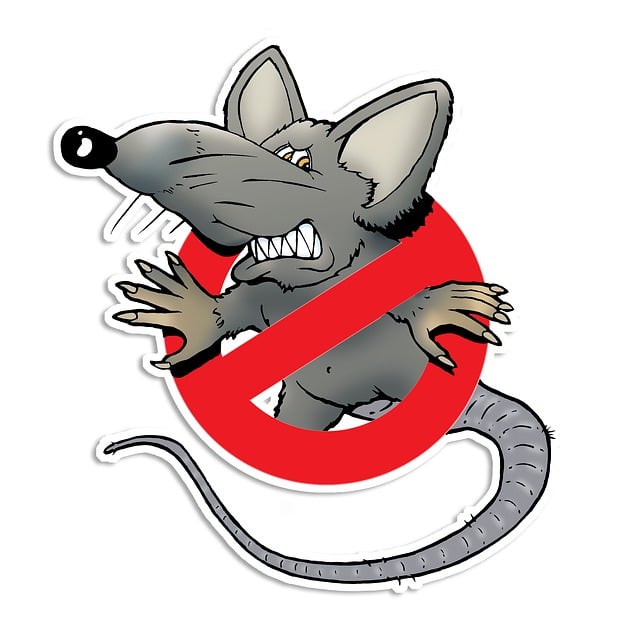Rodent infestations are common due to food, water, and shelter availability, with mice and rats being the most prevalent species. These rodents pose significant health risks and cause property damage. Traditional control methods include trapping and poisoning, but DIY approaches can be challenging and unsafe. Professional rodent control services offer expertise, efficiency, sanitation, and long-term solutions, making them ideal for severe infestations. Implementing strategic measures like identifying entry points, maintaining sanitation, and using repellents is crucial for effective, cost-effective rodent control.
Rodent infestations can cause significant health risks and property damage, making effective rodent control a top priority. Understanding these nuisances, from causes and types to their impact on your well-being and belongings, is crucial. This guide delves into the world of rodent management, exploring traditional methods like trapping and poisoning, DIY removal pros and cons, and the benefits of professional mice removal services. Learn how to prevent future infestations and dispel common myths surrounding rodent control for a healthier, pest-free environment.
Understanding Rodent Infestations: Causes and Common Types of Rodents

Rodent infestations can be a common and frustrating problem for homeowners and businesses alike. Understanding the causes behind these issues is the first step in effective rodent control. Mice and rats are attracted to spaces that offer food, water, and shelter, making homes and commercial properties ideal environments for them to thrive. Common entry points include gaps around pipes, wires, doors, and windows, as well as cracks in walls or foundations. Once inside, these rodents can quickly reproduce, leading to a growing population that requires professional intervention.
There are several types of rodents that can infiltrate your space, with mice and rats being the most prevalent. Mice are smaller, agile creatures known for their quick movements and ability to squeeze into tiny openings. Rats, on the other hand, are larger and have more robust teeth, enabling them to gnaw through materials like wood and metal. Each species has unique behaviors and preferences, impacting the strategies employed in rodent control. Identifying the specific type of rodent is crucial as it dictates the most effective methods for prevention and removal.
The Impact of Rodents on Health and Property: Dangers and Damage

Rodents, such as mice, can pose significant health and property risks if they infiltrate homes or businesses. These tiny creatures are known carriers of various diseases, including salmonella, leptospirosis, and plague, which can be transmitted to humans through direct contact or contaminated food and water. Their presence can lead to unsanitary conditions, as they leave behind droppings and urine that can trigger allergies and respiratory issues for occupants.
Moreover, mice are notorious for causing extensive property damage. They gnaw on wires, wood structures, and insulation, leading to potential fire hazards and costly repairs. Their nests, made from a variety of materials, can clog vents and create blockages, resulting in poor air quality and increased energy bills. Effective rodent control is essential to mitigate these dangers and protect both health and property.
Traditional Methods of Rodent Control: Trapping and Poisoning

Mice removal often involves traditional methods like trapping and poisoning, which have been used for centuries to manage rodent populations. Trapping, a direct approach, employs various tools designed to capture mice alive or dead. Live traps, for instance, are baited with food and ensnare rodents without harming them, allowing for humane relocation. Dead traps, on the other hand, dispatch mice swiftly through mechanized means.
Poisoning, another common tactic, uses chemicals to subdue or kill mice. Anticoagulant rodenticides are popular choices as they disrupt blood clotting, leading to internal bleeding and death. While effective, poisoning comes with risks, including potential exposure to pets and non-target wildlife, and the environmental impact of toxic substances. As such, it’s crucial to employ these traditional methods responsibly and in line with local regulations for optimal rodent control.
Advantages and Disadvantages of DIY Rodent Removal

Attempting to tackle rodent removal yourself can present a mix of advantages and disadvantages. One key benefit is cost-effectiveness, as DIY methods often avoid the expenses associated with professional services. Homeowners can find numerous traps and repellents at affordable prices, making it an economical option for minor infestations. Additionally, doing it yourself offers control over the process, allowing you to set your own schedule and use products you feel comfortable with.
However, DIY rodent removal also has its drawbacks. If not done properly, it can lead to multiple attempts and a prolonged struggle, causing stress and potentially increasing damage to your property. Moreover, some rodents may carry diseases or leave behind harmful droppings, posing health risks. Professional services provide expertise and specialized equipment, ensuring more efficient and sanitary rodent control. They also offer ongoing support, which is beneficial for severe infestations that require continuous monitoring and prevention strategies.
Professional Mice Removal Services: What to Expect

Professional mice removal services are designed to provide effective and humane solutions for dealing with rodent infestations. When you engage such a service, expect a comprehensive approach that begins with an extensive inspection to identify all entry points and active mouse habitats. The experts will then employ a combination of techniques including trapping, poisoning (using approved, non-lethal methods), and sealing off potential future access points.
These professionals are equipped with the knowledge and tools to navigate labyrinthine spaces, ensuring every corner is checked. They also take precautions to minimize disruption to your home or business, cleaning up after their work and disposing of captured rodents safely and responsibly. The goal is not just to remove existing mice but to implement long-term rodent control measures, preventing future infestations.
Effective Long-term Solutions for Preventing Future Infestations

Mice and rodents can quickly turn into a persistent problem, so it’s crucial to implement long-term solutions for effective rodent control. Preventing future infestations involves a multi-faceted approach that starts with identifying and sealing entry points. This includes checking for cracks, gaps around pipes and cables, and securing windows and doors. Regular sanitation practices are also key; keeping areas clean and free of food debris discourages rodents from seeking shelter.
Additionally, maintaining proper ventilation and moisture control is essential. Rodents are attracted to areas with high humidity, so addressing any leaks or moisture issues is vital. Using trap systems and repellents can offer short-term relief but should be combined with these preventive measures for a more lasting solution to rodent control.
Common Questions and Misconceptions About Rodent Control

Many homeowners often have concerns and misconceptions about rodent control, especially when it comes to dealing with mice infestations. Here are some common questions and clarifications regarding this important service.
One frequent query is whether DIY methods are effective for mouse removal. While there are numerous home remedies and traps available, professional rodent control services offer specialized knowledge and tools. They understand that mice can quickly reproduce and adapt, requiring tailored solutions. Most people also believe that calling a pro is an expensive option. However, the costs associated with efficient rodent control are often more affordable than the potential damage caused by an unchecked mouse infestation, which can lead to costly repairs and health hazards.
